
9 minute read
PROFILE: VAUGHAN MABEE
Vaughan Mabee
Renowned chef Vaughan Mabee on hyperlocal hunting and provocative plates.
WORDS Laura Box
PHOTOGRAPHY Sam Stewart
WHEN HOSPITALITY MET Vaughan Mabee, it was by chance at an industry dinner during Melbourne Food and Wine Festival. It took us a little too long to realise that the humble chef was actually the Co-Owner and Executive Chef of one of the world’s best restaurants, Amisfield. Mabee’s willingness to humour this naivety is an ingrained part of his modest nature, an attitude which makes the New Zealand-born chef all the more likeable.
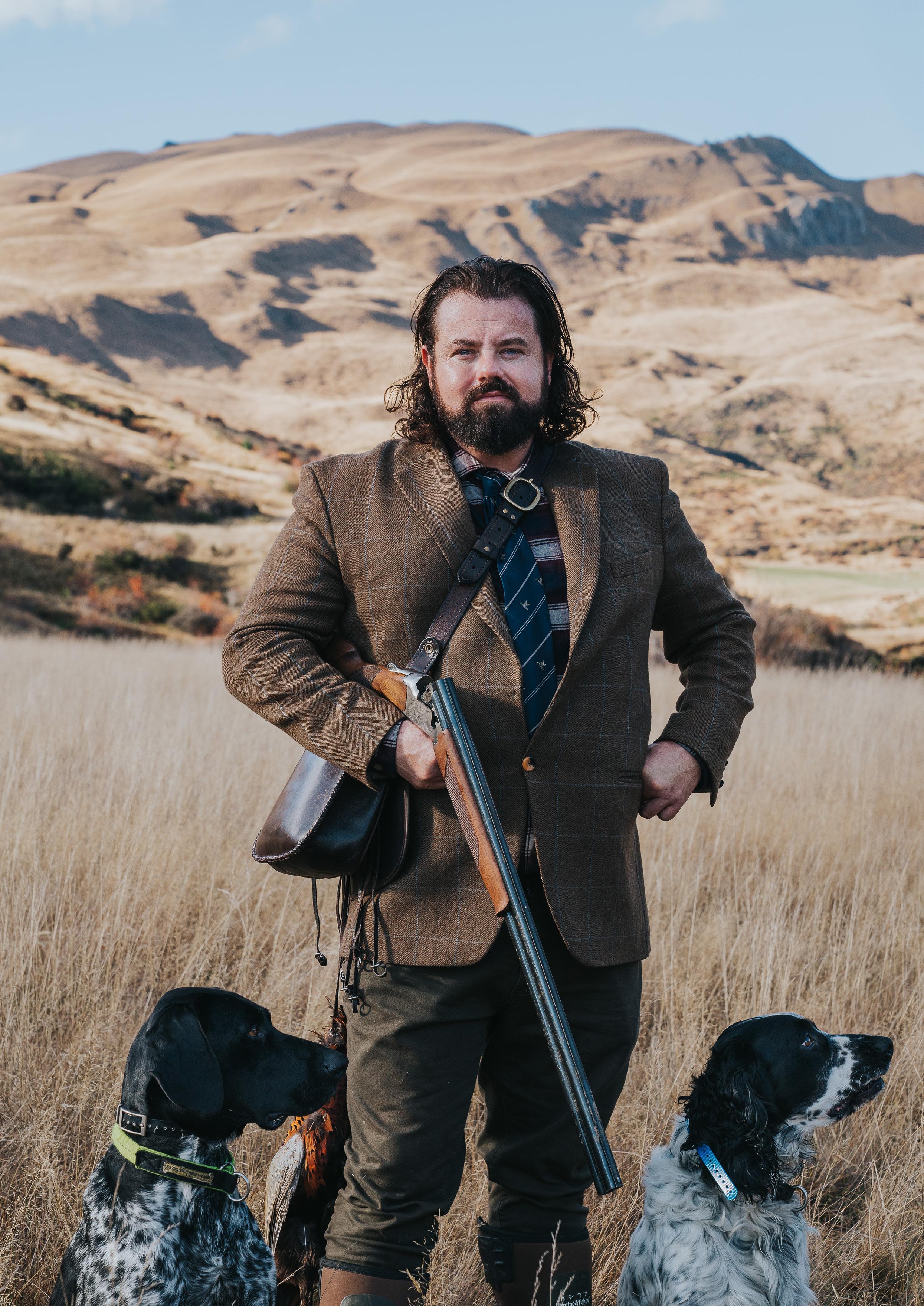
During the pork-focussed meal, Mabee brought up an image of what appeared to be a pig’s snout on his phone; lifelike snout pores and all. The dish is one he serves at Amisfield: a wild boar mortadella, served on a boudin noir crumpet with pigs’ liver butter. The chef’s creations are purposefully provocative, aimed at encouraging guests to be more in touch with what they consume.
“The world has changed a lot in the last 20 years since I’ve been a chef. I feel like people don’t really think about what they’re eating enough,” says Mabee. “All this huge factory farming — I’m not saying it’s bad, but there are just so many people that things have got out of balance. I feel like when we showcase our ingredients in a provocative way with some realism, people relate with it more and respect it more.” The bonus? “It tells a more visual story of New Zealand in a way that hasn’t been told before.” Another lifelike rendition comes in the form of the native New Zealand pūtangitangi duck head, hard bill and all. The only catch? It’s actually a duck liver ice cream, and its beak is filled with fermented elderberry jelly (perhaps a reference to iconic Kiwi chocolate, Whittaker’s Jelly Tip).
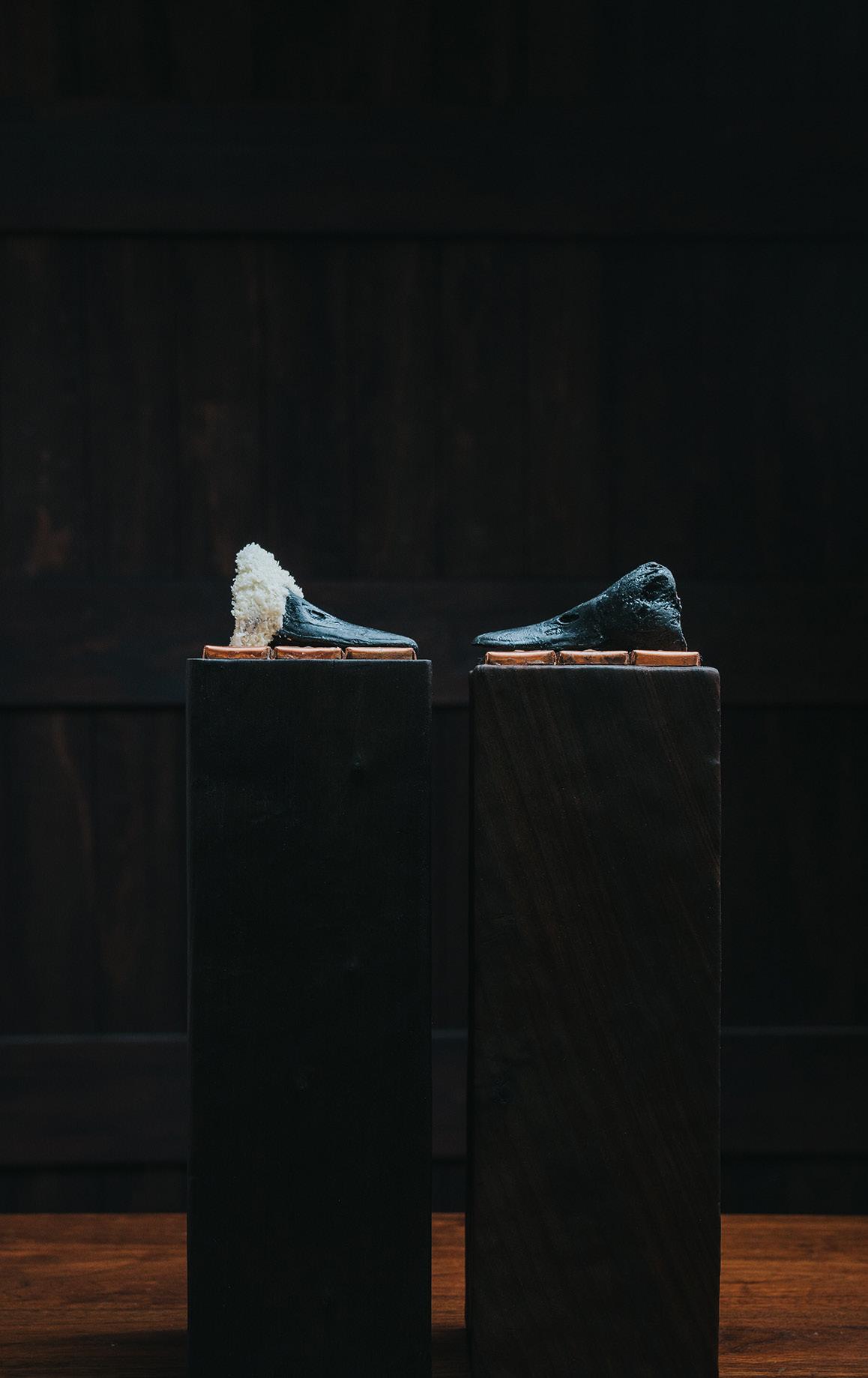
Recently, influential US magazine Food & Wine named Amisfield third best restaurant in the world. It comes in succession to a run of high calibre awards, including four consecutive Restaurant of the Year (2020-2023) awards from New Zealand’s Cuisine Good Food, a place on The World’s 50 Best Restaurants Discovery 2024, and three hats.
Amisfield Restaurant and Cellar Door sits beside Lake Hayes, between Queenstown and Arrowtown on New Zealand’s South Island. The restaurant is committed to working in harmony with the land and capturing the essence of Central Otago. Each dish is crafted into culinary fine art using ingredients from a select group of fishermen, hunters, gatherers, and farmers, and paired with organic wines from Amisfield Vineyard or international drops. The restaurant’s combination of hyper-local cuisine and creativity is what put the restaurant on the global foodie map — in large part, thanks to Mabee.

Mabee started out in the kitchen like many others – as a teenage dishwasher elbow deep in suds with a long-held love of food, before methodically working his way up the ranks. Prior to joining Amisfield in 2012, the chef worked at leading three Michelin-starred restaurants including Martin Berasategui in Lasarte-Oria outside San Sebastián, and at Noma in Copenhagen. He is ranked with 3 Knives — the highest recognition from The Best Chef Awards.
Showcasing New Zealand’s unique and underutilised produce is a big driver for Mabee, and the chef thinks this is partly what has driven Amisfield’s significant growth and international acclaim. “We focus on finding products that are only available in New Zealand, whether it’s a type of fish or different kinds of spices and things we use from the native forest,” says Mabee. These local products include mushrooms endemic to New Zealand that appear on Amisfield’s Autumn chef’s menu, including Pekepeke which grows in rainforests, Tawaka, which grows on hardwoods like birch, and the Te Ngawata, which is found on the Tāwhai tree.

“All of these mushroom dishes come out attached to the native trees that they grow on. They’re almost like sculptures that we’ve made out of the beech tree, which we call the Tāwai tree, or the Matagouri tree. And when you put it on the table, it feels like you’re in the rainforest.”
During his time working in international Michelin-starred establishments, Mabee noticed that many restaurants would use “crazy ingredients” from all around the world. “It would be the finest Japanese Wagyu, or the best farmed pork. They were the best ingredients that were farmed in places that were sometimes far away.” While the produce was phenomenal, the distance it had to travel didn’t sit well with Mabee. And while locally sourced produce isn’t a new phenomenon, Mabee and his team take it one step further — using produce that is foraged and hunted locally either by the team itself or by local hunters. The goal is to showcase the true flavours of Central Otago.
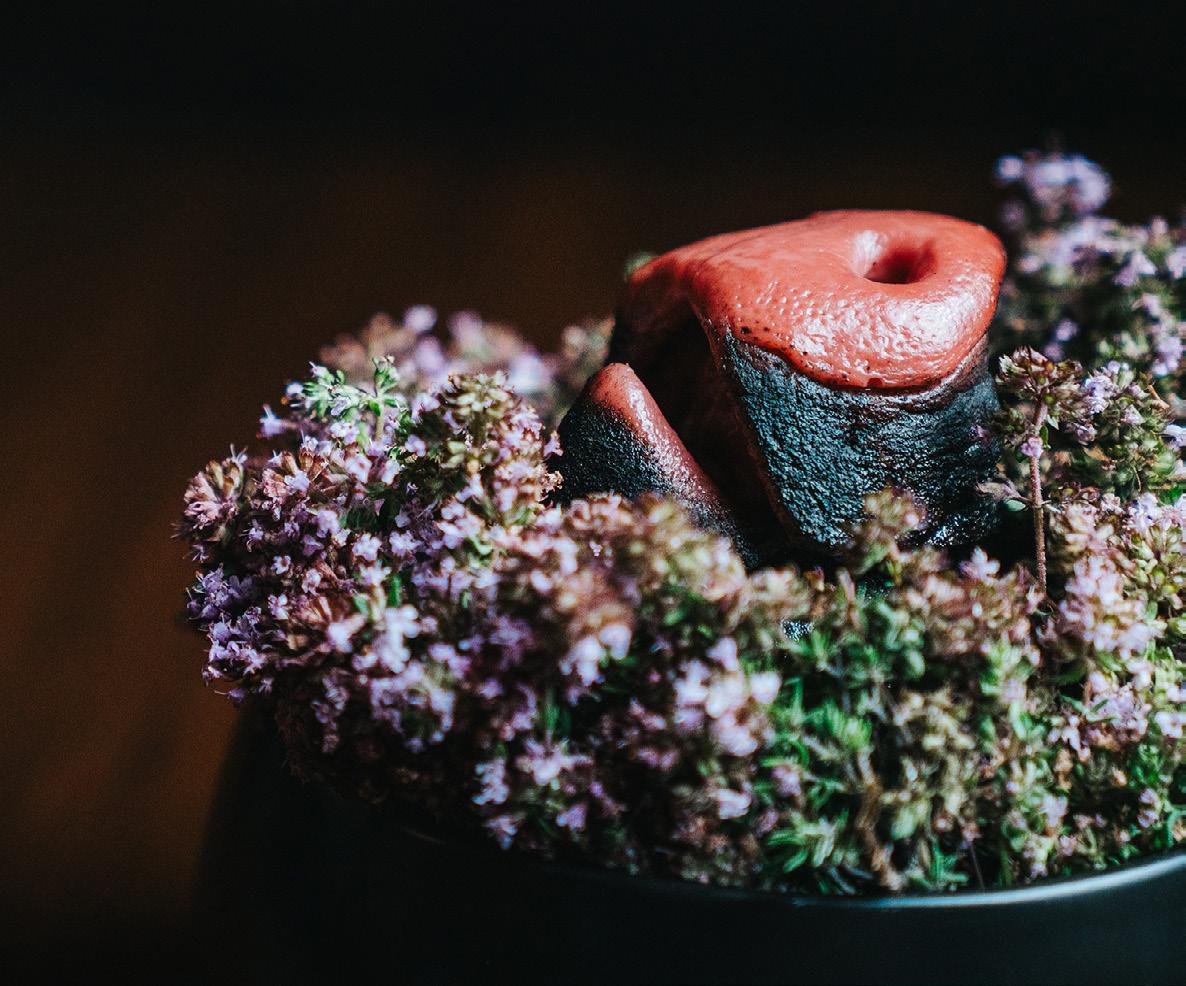
On his return to New Zealand, the chef began using lambs sourced came from a farm behind Amisfield. But as he thought more about what represents the true flavour of New Zealand, he thought the produce shouldn’t only be local, it should also be wild. “To me, it tastes more free. When I eat a piece of venison and I know where it’s come from, I feel a little bit less guilty about it than if it was farmed and trapped. At least it’s had its own freedom and its own life in this beautiful terrain here and it hasn’t been bred to be eaten.
The Amisfield team now doesn’t source anything from farms. “It’s all wild. So we’ll have wild elk. We have wild red deer. We have wild hare.”
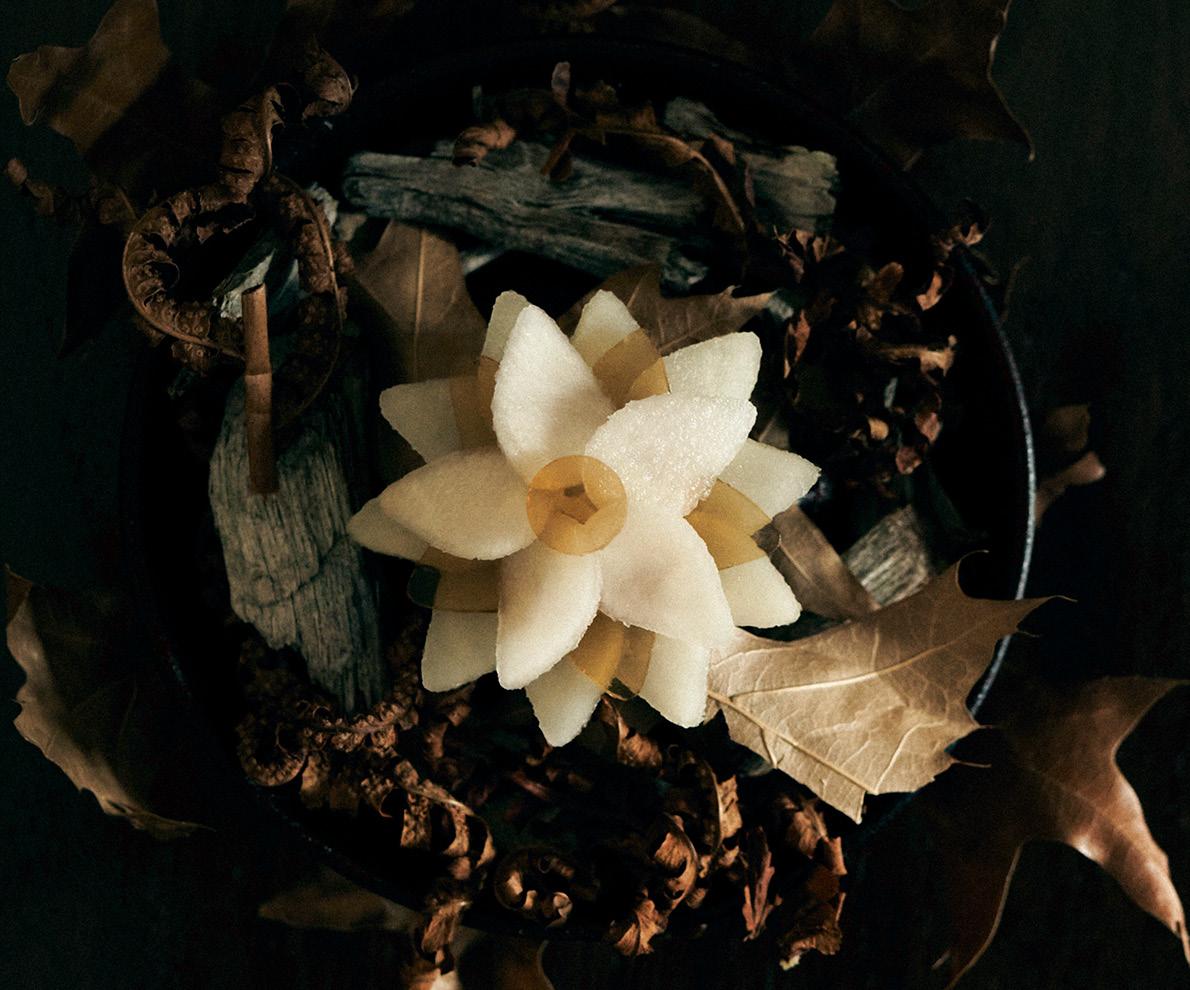
When asked whether this means certain items might not make it to the menu every night, Mabee points out that the region has far more wildlife than humans. Instead, the main challenge can be the inconsistency in size and flavour, meaning no recipe can ever really be the same. The result, says Mabee, is that his chefs must be more in touch with how they cook and more connected to the product. “It’s a really great way of showcasing the passion we’re trying to create,” says Mabee, “and the ability of the chefs”. The chef recognises that this exercise can’t be done in most of the world — it’s a unique asset of the restaurant’s remote location.
As an avid hunter himself, Mabee practices what he preaches by drawing on his family history of catching fish and game in the wild. “It makes me feel peaceful. I think one of my favourite things to do is to go pheasant hunting or duck hunting with the hunting dog. It gives me the time to relax and clear my mind a bit. Being on the top, it becomes your entire life, and you can’t stop thinking about it. As a creative, it’s just never ending. When I go hunting, I detach myself from that,” says Mabee. The chef also hunts because it’s what he loves to cook for his family. “Whether it’s Sunday and we’re having a pheasant pie, or whether we’re doing venison. It can be anything.”

Hunting for food paints a pastoral picture in one’s mind; and while Amisfield’s rustic stone masonry could evidence this, the building’s A-frame façade is punctuated by a chic, contemporary window which hints at a high level of refinement within. Polished artistry is on show in every course at the restaurant. The chef says creativity has been part of his practice his entire life, but in the last five years he’s managed to develop his own, truly unique style.
“The creative side of being a chef for me is the most important in how we evolve or how we showcase the ingredients in a different way. I really love to make the guests feel like they’re involved in the ingredient more than just putting it into a plate,” says Mabee.
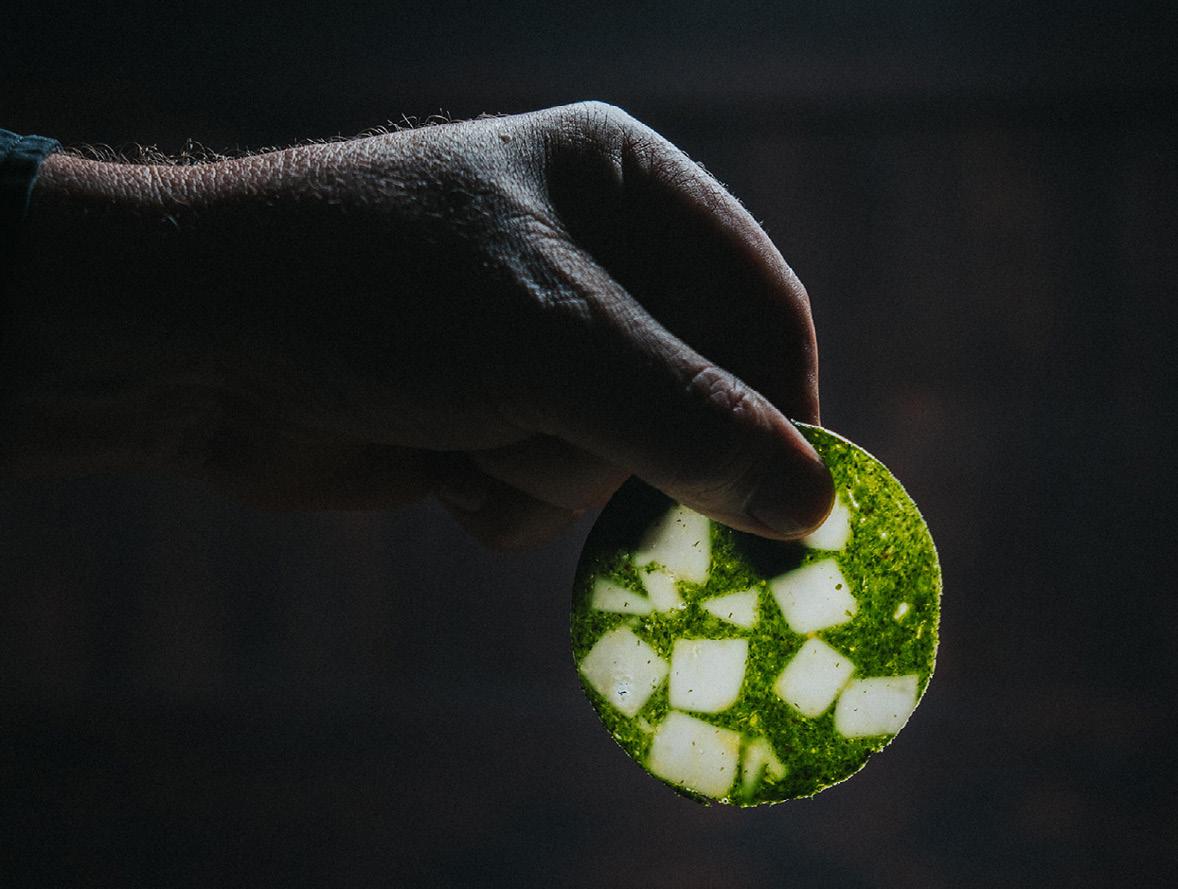
The menu evokes vivid imagery. Alongside the lifelike interpretations of ducks heads, boar snouts, and crayfish, there are more abstract dishes: paua (abalone) saucisson with a distinctive sea-green hue; or the white asparagus cut to resemble a flower or anemone, and charred.
“We serve a lot of our things really outside the box from the way that you see it first. You always eat first with your eyes and that gives the guests a lot of excitement,” says the chef. “Some of our dishes are quite challenging. That style of cuisine has become known for what we do at Amisfield. We really take you into New Zealand in a way that no one’s ever done before. And, it’s working really well.”
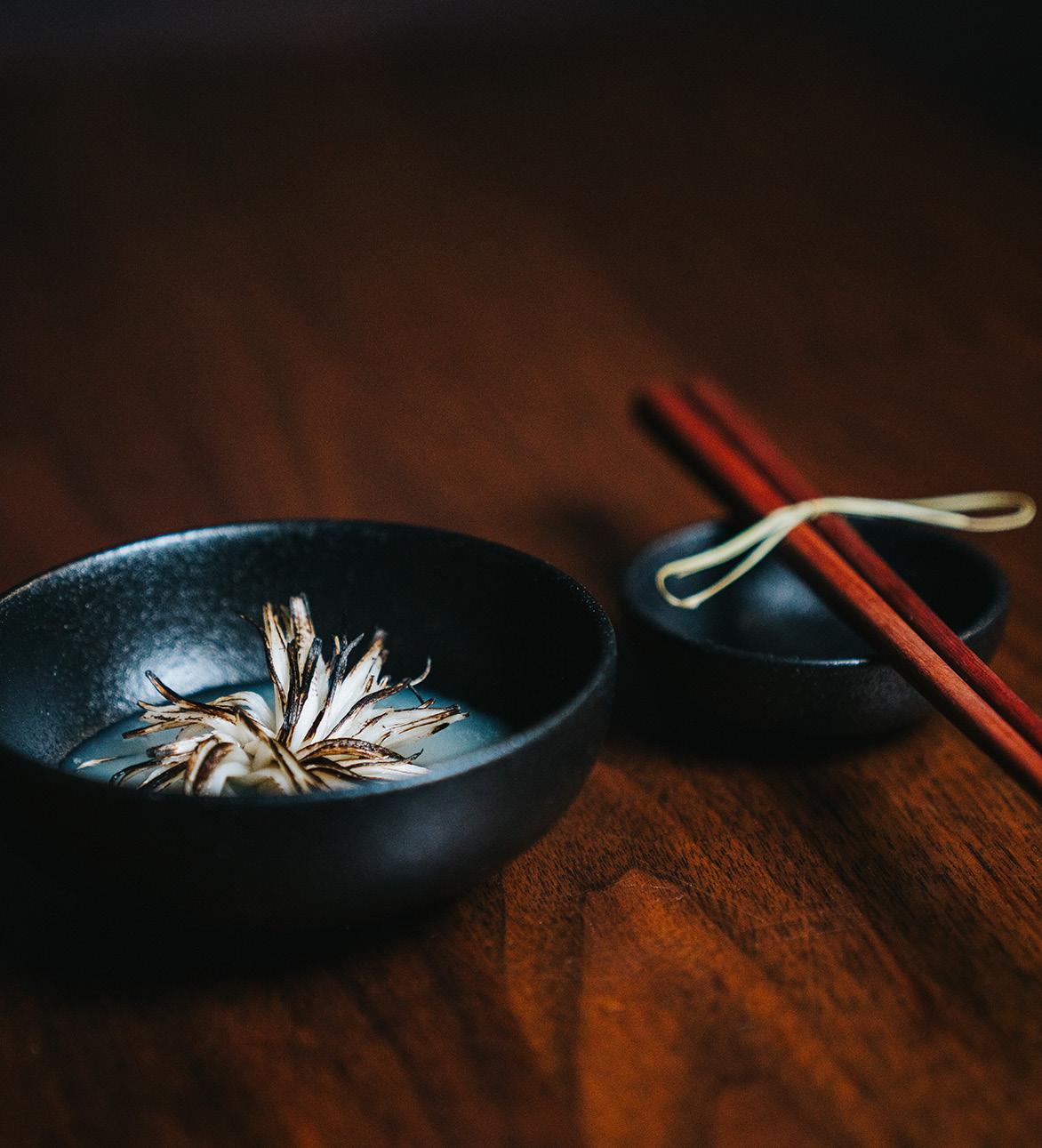
It’s taken a huge amount of committed work for Mabee to get to the stage he’s at. “I’ve been [at Amisfield] for about 15 years. It was definitely a slow burn to get it where it is now. And it was hard.” For Mabee, the satisfaction of the job is simple. “It’s about what’s going on inside the restaurant,” says the chef. “The biggest highlight is this feeling you get when all the staff are on the same angle you’re on. Everyone is super passionate and driven. It’s this feeling you get when you have a really beautiful service; You’re sold out and people from all around the world are dining here and you feel absolutely stunned and happy that they can leave with this amazing experience.”



